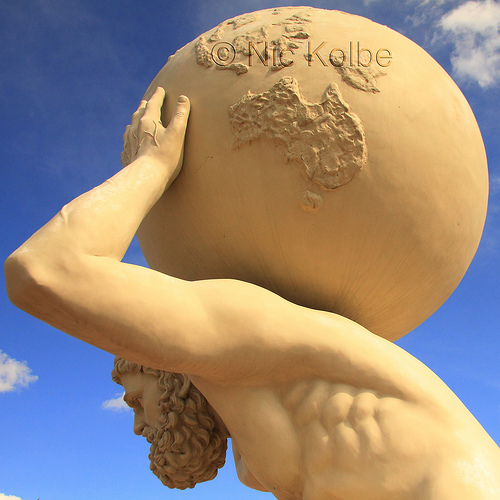In Greek mythology, Atlas was a son of the Titan, Iapetus, and the Oceanid, Clymene, who were also parents to Menoetius, Prometheus and Epimethus. He had seven daughters by his wife, Pleione, who were called by the common name, Pleides; and seven more by his wife, Aethra, called the Hyades (both the Pleides and Hyades are celestial constellations) – although Pleione and Aethra are often considered one and the same – whilst Hesperius is supposed to have also been the mother of Atlas’ Hesperides.
Atlas, along with Menoetius, was involved in the revolt against the Olympians, and when the Titans were defeated his punishment was to hold up the sky (or the Heavens) to separate it from the Earth. He became commonplace on the front of world map books, thus the name ‘Atlas’ became the title of these books, however this resulted in a misconception that Atlas holds up the globe, when in actuality, he supports the celestial sphere.
He was further punished for his inhospitality to Perseus, who, according to Ovid, used Medusa’s head to turn him into stone and make him into the mountain range in North Africa that bears his name. (This doesn’t correlate with the tales of his encounter with Heracles but in mythology anything’s possible.)
Atlas the baleful; he knows the depths of all the seas, and he, no other, guards (or holds) the tall pillars that keep the sky and earth apart.
– Homer, The Odyessy. (Translated by Walter Shewring)
…and turned his face away and on his left held out the loathsome head, Medusa’s head. Atlas, so huge, became a mountain; beard and hair were changed to forests, shoulders were cliffs, hands ridges; where his head had lately been, the soaring summit rose; his bones were turned to stone. Then each part grew beyond all measure (so the gods ordained) and on his shoulders rested the whole vault of heaven with all the innumerable stars.
– Ovid, Metamorphoses. (Translated by A. D. Melville)

